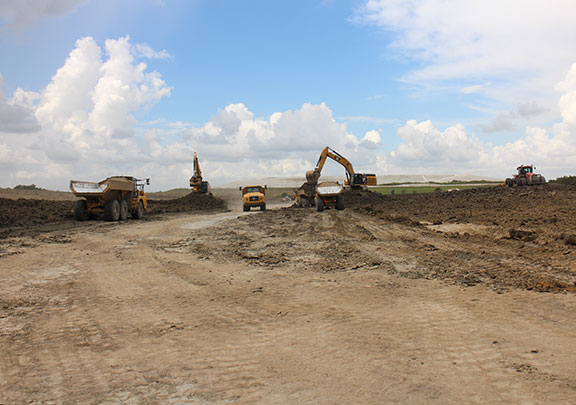Even when all traffic control measures are taken, a confused or unaware driver can crash through a work site, or a daydreaming worker can step into the path of a speeding vehicle. Some drivers take reckless chances by running stop signs or changing lanes without signaling. These unsafe acts jeopardize other drivers who may lose control of their vehicle while avoiding a collision. We must all prepare for the unexpected on the road, both during and after work hours. When our worksite involves moving traffic, safety awareness should be at its peak, to protect both the public and the crew. Let’s all follow these safety procedures:
- Planning: All traffic control must be carefully planned and approved by appropriate authorities before work begins. The person responsible for this planning should drive through the traffic pattern before any work starts to ensure that the public will understand how to control their vehicles appropriately. If there is any possibility of driver confusion in the pattern, change it.
- Signage: The Manual on Uniform Traffic Control Devices and local or state regulations should be followed for proper signage and barricading. Place initial warning signs a minimum of 1,000 feet from traffic revisions. All signs and related equipment should be in good condition and highly visible. In some cases, independent traffic safety contractors handle warning signs and barricades.
- Barricades: Devices which guide traffic such as cones, barrels, etc., should be highly visible and spaced relatively close together, so drivers will not deviate from an assigned traffic flow. All such barriers should be made of material that will cause little or no damage if a vehicle contacts it.
- Safety Gear: All employees should wear hard hats and must wear high-visibility orange or day-glow vests. When working at night, the vest should have light-reflective strips.
- Flaggers: Roadside construction sites must have at least one individual assigned to traffic control. A highly visible sign paddle should be used during daylight hours. It should be octagonal in shape, at least 18 inches across, and have letters at least six inches high that say STOP on one side and SLOW on the other. Flaggers should have two-way radios. When flaggers are present, a sign indicating this must be placed a minimum of 500 feet from the beginning of the detour.
- Vehicles: All construction vehicles should be equipped with backing alarms, two-way radios, and Slow Moving Vehicle signs when appropriate. Ideally, they should be painted a highly visible color and many jurisdictions also require flashing yellow beacons. All operators must be qualified and trained to operate the equipment they are using. If a vehicle will be parked along-side the road, orange safety cones should be placed around it to alert drivers.
- Night Work: If work is done at night, the entire site must be illuminated. Increase warning distances in areas of fast-moving traffic as light fails. Flaggers should have orange-cone flashlights and barricades should be equipped with flashing lights. Any excavations or utility accesses should be taped off and barricaded with flashing warning lights.
- Training: All company employees and subcontractors involved in the project must receive an initial safety orientation, informing them of the potential hazards of the project, including traffic safety. Changes or unusual conditions should be communicated to workers immediately.
Above all, keep your brain turned on and stay alert–don’t get hurt!
PDF version is available through the link below.

